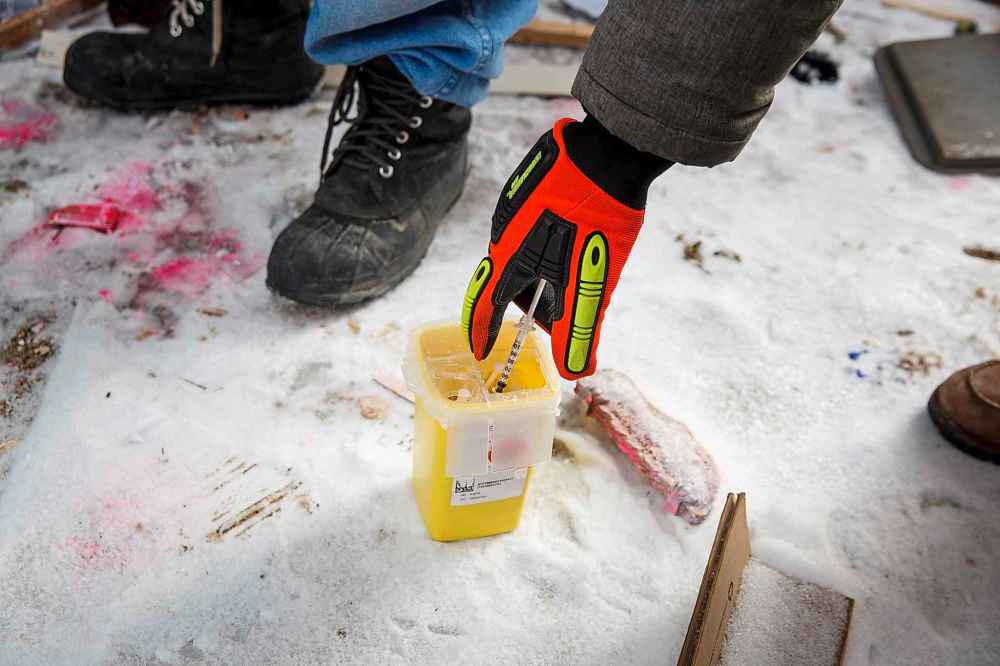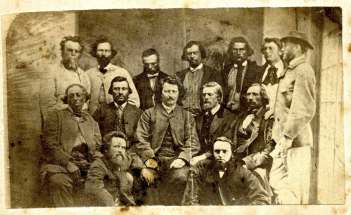Painful causes, shocking effects Poverty and hopelessness fuelling Winnipeg's drug crisis and accompanying violence are visible to anyone who dares to look; it's the fix that's hard to see
Read this article for free:
or
Already have an account? Log in here »
To continue reading, please subscribe:
Monthly Digital Subscription
$0 for the first 4 weeks*
- Enjoy unlimited reading on winnipegfreepress.com
- Read the E-Edition, our digital replica newspaper
- Access News Break, our award-winning app
- Play interactive puzzles
*No charge for 4 weeks then price increases to the regular rate of $19.00 plus GST every four weeks. Offer available to new and qualified returning subscribers only. Cancel any time.
Monthly Digital Subscription
$4.75/week*
- Enjoy unlimited reading on winnipegfreepress.com
- Read the E-Edition, our digital replica newspaper
- Access News Break, our award-winning app
- Play interactive puzzles
*Billed as $19 plus GST every four weeks. Cancel any time.
To continue reading, please subscribe:
Add Free Press access to your Brandon Sun subscription for only an additional
$1 for the first 4 weeks*
*Your next subscription payment will increase by $1.00 and you will be charged $16.99 plus GST for four weeks. After four weeks, your payment will increase to $23.99 plus GST every four weeks.
Read unlimited articles for free today:
or
Already have an account? Log in here »
Hey there, time traveller!
This article was published 14/12/2019 (2189 days ago), so information in it may no longer be current.
We know why people turn to crystal meth. We know, because they tell us. They tell doctors, and they tell journalists. They tell social workers, and they tell lawyers. They tell the people who ask, and they tell those who are prepared to listen, and as they do their stories tumble out as a theme played along infinite and individual variations.
Someone without a home starts using meth to stay awake at night, to better survive the dangers of the street. Or a young girl, hurting from a family trauma, tries it once because it was given to her by an older man who, at first, made her feel protected, but then… but then… but then…
A successful white-collar professional, reeling from the stress that weighs on his shoulders, begins to use meth because it makes him feel powerful, as if he can tackle his problems after all. A single mother, exhausted by the constant struggle to keep her family’s heads above water, takes it to numb the fear that they will drown.

These are only some of the stories I have heard over these years that crystal meth has swept over the city. Stories like these have flitted through coverage of the drug’s alarming surge, though at a rate far less than the voices of police spokespersons, or politicians, or academics.
What that means is that, though the truth of addiction is being articulated every day, it isn’t always what frames the very public conversation about its most visibly damaging impacts, or about its solutions.
So that was something to mull over this week, when the Canadian Centre for Policy Alternatives released its 15th annual State of the Inner City report. This year’s edition, Forest for the Trees: Reducing Drug and Mental Health Harms in the Inner City, focuses on the root causes of addiction and how to adequately address them.
Forest for the Trees: Reducing Drug and Mental Health Harms in the Inner City
The report was produced through extensive collaboration with community organizations in Winnipeg’s inner city, where front-line workers have unique insight into the needs of the people they support. It describes how the meth issue cannot be separated from the pain that undergirds it — or, in effect, the “why” of addiction.
Among other things, the report urges governments to prioritize solutions — some already contained in its reports, that focus on systemic, rather than individual, solutions. It calls on the City of Winnipeg itself to develop a comprehensive strategy, something it has not yet attempted. Above all, it calls for a broader perspective.
“We must create communities where people can experience a sense of hope, belonging, meaning and purpose in their daily lives, otherwise we will continue to fight an uphill battle,” report author Ellen Smirl said in a statement.
“We must create communities where people can experience a sense of hope, belonging, meaning and purpose in their daily lives, otherwise we will continue to fight an uphill battle.” – Ellen Smirl
Governments cannot do this. Nobody has ever found their belonging in the pages of a provincial study; nobody will ever find meaning in a task force report. What government can do, what it is uniquely poised to do, is to relieve the pressure on communities brokered by failed past or present policies that frustrate work towards healing.
Because communities can heal themselves when given space and support to do so. In Winnipeg, there is no shortage of people working to pull splintered communities back together, to give stability to families that have struggled to find solid footing on which to build a safe existence, or to help hurting neighbourhoods rise.
You don’t see all, or even most, of these people in the newspaper. You don’t see them on TV at night. Their work happens largely outside the public eye, or even outside the bounds of any official organization. But every street has people who care, who spend their lives reaching out to give support to those struggling around them.
This work, invisible or at best briefly manifesting in public attention, is critical. Because if we treat the mission of countering addiction as a war, then the inevitable solution is more soldiers; but if we understand it as a plan for construction, then we know it must begin by giving tools to the builders.
And the war on drugs has never been won because it is not winnable. In practice, it has resulted in little more than a never-ending flow of massive public spending on enforcement and incarceration, bolstered by language that posits stigmatized drugs, and those who sell or use them, as a faceless enemy to be defeated.
What it has not done is to meaningfully disrupt the cycle of trauma that underpins addiction, or to give people with damaging addictions the tools to build a healthier life. It has, in fact, had the counterproductive effect of deepening those chasms — enacting more trauma on families, more pressure, more disruptions.
We need to change that conversation. In the recent past, one of the great shifts in the public discourse around addiction began with a move toward describing it as a disease rather than a personal failing. Perhaps we need another shift, this one to keep in step with what we are now learning about addiction.
How would it change our collective approach if we begin with the reflection that addiction can be a logical emotional response to lives that, through a deeply knotted web of public and private forces, have become otherwise unlivable? How would it change how we perceive solutions, if we understood addiction itself as a salve for problems?
How would it change our collective approach if we begin with the reflection that addiction can be a logical emotional response to lives that, through a deeply knotted web of public and private forces, have become otherwise unlivable?
This is a difficult conversation because it is not simple. Good and evil, right and wrong, enemy and friend: that discussion is easy to uphold because the lines it draws are so clearly visible. But it does not paint an accurate picture of addiction, where all the lines are blurred until they are hard to distinguish from the others.
And in truth, that picture can be hard to see. For me, after years absorbing and occasionally documenting the shape of addiction, the true portrait of its harm — and of its solutions — still appears as beneath a clouded glass, murky and uncertain. When I try to hold its shapes inside my mind, they slip through my grasp as fast as I can hold them.
Still, if we dare to envision a city where the pain of generations is healed without addiction, then we must try to bring that image into focus. Because when you get right down to it, we know why people use meth, or alcohol, or opiates. They have spoken; they have told us, and those stories reveal the map to lead us out of the problem.
What we have not yet come to grasp is why we fail to fully hear them.
melissa.martin@freepress.mb.ca
Our newsroom depends on a growing audience of readers to power our journalism. If you are not a paid reader, please consider becoming a subscriber.
Our newsroom depends on its audience of readers to power our journalism. Thank you for your support.















